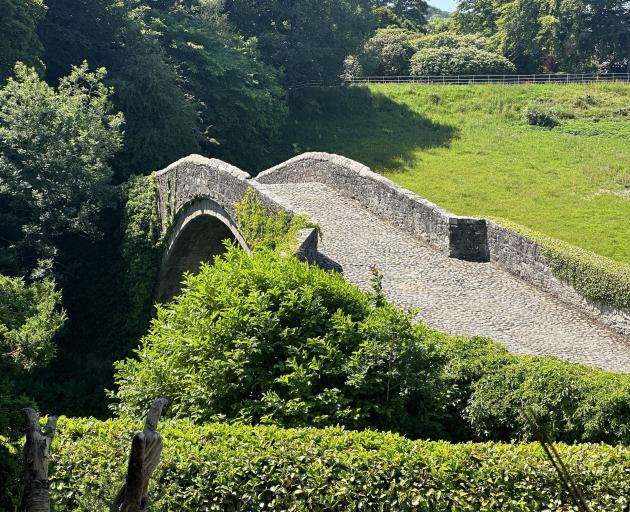
On a recent UK road trip we needed to slot in a seaside town on the west coast of Scotland as a stepping stone between the Yorkshire Dales and the Kintyre Peninsula. The medieval market town of Ayr on the Firth of Clyde stood out for its rich history and attractive beaches, but mostly for the acclaimed birthplace museum of its most famous son, Robert Burns.

I grew up on Burns St, Mosgiel, but never gave a thought to the name. As a youth my awareness of Scotland’s national bard was limited to the $7.95 "swap-a-crates" of Speight’s on offer at Dunedin’s late-lamented Robbie Burns pub on George St, and the bronze statue in the Octagon a mate and I were justifiably "moved on" from by a cop late one Friday night.
Though Burns died half a century before Dunedin was founded, his spirit presides over the city like a founding father. Burns Night is celebrated more enthusiastically here than anywhere outside Scotland, while the University of Otago’s Burns Fellowship is arguably New Zealand’s most prestigious literary grant. Robert’s nephew Thomas Burns was the spiritual leader of the "New Edinburgh" settlement, while Mosgiel was named after the poet’s farm in Ayrshire.
I also had a personal connection to Burns in the form of a large oil painting that hung above the fireplace in the lounge of my Scottish wife’s family home near Carisbrook. Painted by Maureen’s late uncle Joe of Dundee, it is a nightmare of skeletal trees, half-naked witches and bad weather from Burns’ famed narrative poem Tam o’ Shanter.

More than 5000 Burns relics adorn the museum’s glass cases, including original handwritten manuscripts (most of which I found indecipherable due to the script and Scots dialect.) A wealth of detail builds a picture of the man: the Masonic apron he wore to Lodge meetings in Dumfries; a pair of flintlock pistols from his time as an exciseman, a portable writing set with a small inkwell and goose-quill nibs. Violins and music sheets remind us that Burns was also a lyricist who wrote Auld Lang Syne, and who inspired musicians such as Bob Dylan, David Bowie, and Paul McCartney. Dylan named Burns as his greatest inspiration. Both men were civil rights champions. Where Burns wrote "A man’s a man for a’ that",’ Dylan wrote "How many roads must a man walk down, before you call him a man".
There were also hints of the human frailties that often shadow greatness: a liking for whisky reflected in a row of empty bottles and captured in such lines as "O thou, my Muse! guid auld Scotch drink!", and letters confirming his reputation as a serial womaniser.
We emerged from the dim-lit museum halls into bright sunshine and the world of Tam o’ Shanter. It is the tale of a horseman stopping too late at the pub on market day, and fearing a wife at home, "gathering her brows like gathering storm, Nursing her wrath to keep it warm". She had warned him about the haunted kirk (church) he would need to pass but he took no heed.

As Tam approached the ruin he saw strange lights and noises coming from within. Edging his horse, Meg, closer he was confronted by a scene of unimaginable horror, witches and warlocks danced around a bag-piping demon, walls lined with open coffins, the corpses holding candles in their skeletal hands.


We followed the Poet’s Path towards the Burns Birthplace cottage. After a few minutes I said "Oh, there’s a mouse".
Maureen froze. "Where?" she shrieked.
"Sorry, up there," I said, gesturing towards a pointy-faced shape in the distance.
It was the first of the Poet’s Path statues, the "Wee sleekit, cow’rin, tim’rous beastie" of To a Mouse. But at two metres high there was nothing cowering or timorous about it. The next statue along the path was less impressive. The haggis might be the highlight of Burns Night but rendered in granite it is no Venus de Milo.
We strolled through a kilometre or so of immaculate gardens, more Burns-esque statuary and ironwork silhouettes of scenes from Tam ‘o Shanter.

Farm animals shared the space with their owners amid a clutter of fire-grates and flagstones, griddles and kettles, spinning wheels, butter churns and milking stools. In a low-ceilinged alcove off the kitchen lay the wooden bed in which Robert and his three siblings were born, their backlit white nightdresses suspended above it like floating angels. This was a building haunted by good ghosts.

Established in 1749, 10 years before Burns was born, it is held to be the pub where Tam began his fateful ride. There were two spaces open to each other. One was rowdy. The other, decked out as a shrine to Robert Burns, was empty. We chose that one, and toasted the bard with a malty ale, surrounded by painted scenes from his epic poem.

At 10pm in the warm windless evening we watched the famous molten-gold sunset over the Isle of Arran, the curtain-fall on a memorable day.
Ayr began as a stepping stone in a holiday but became much more; a pilgrimage to the cradle of a poet’s genius and a bridge across time, from Scotland’s cultural core to its spiritual twin on the shores of Otago Harbour.












